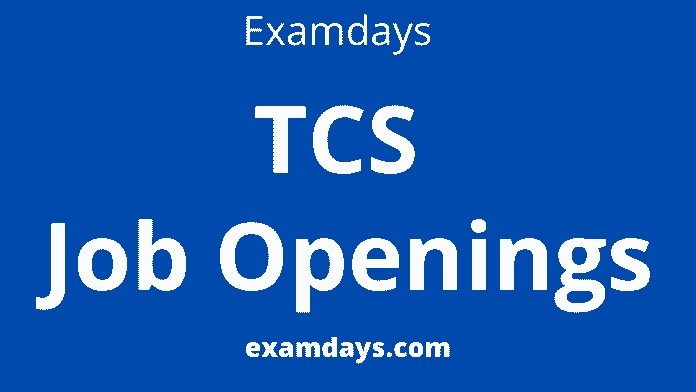You can claim that you’re good in English in your application form. But no institution is going to give you a spot on that alone. You need a proper assessment. Go through some university application forms, and you’ll notice two exams recurring all the time: the IELTS and the TOEFL. Most institutes accept one, while the majority accept both exams. So, which one do you choose?
Most students try to base their decision once they figure out which exam is easier. Well, here’s where things get tricky. You can’t claim that the TOEFL is more complex than the IELTS or vice versa. Opinions will vary among students. If you’re worried about your score, you can sign up for TOEFL coaching online on AbroAdvice.com and end up with really good results.
Does that mean there are not options for the IELTS? Absolutely not! If your main target is a high IELTS band, then you’ll find quite a few websites offering IELTS coaching online to help you achieve your goal.
So…which one do you choose?
TOEFL vs. IELTS: Main Differences
I. Exam Duration
The total duration of the TOEFL is just under 2 hours. Here’s a breakdown of the time allocated for each section:
| Section | Approximate Time |
| Reading | 35 minutes |
| Listening | 36 minutes |
| Speaking | 16 minutes |
| Writing | 29 minutes |
Even if you add another 30 minutes for check-in, the actual exam duration doesn’t even cross 2 hours.
You’re in for a shock once you check the IELTS timing after the TOEFL. If you decide to appear for the IELTS, you can add another 44 minutes. This doesn’t even include the 10 minutes of transfer time! So, overall, you’re looking at a total duration of 2 hours 44 minutes (plus 10 minutes of transfer time).
| Section | Approximate Time |
| Listening | 30 minutes (plus 10 minutes) |
| Reading | 60 minutes |
| Writing | 60 minutes |
| Speaking | 11-14 minutes |
Now, when deciding which exam to appear for, ask yourself whether you’ll do well in an exam of a shorter duration or a longer one. Most students tend to choose one with the shorter one. If that’s the case, then the TOEFL is best suited for your needs. But if you don’t mind exams with longer duration, then keep the IELTS in the books.
II. Exam Pattern
Both the IELTS and the TOEFL cover four sections in their exams:
- Reading
- Listening
- Speaking
- Writing
Now, let’s take a close look at the differences in each section.
A. Reading
| Exam | TOEFL | IELTS |
| Section Details | You have to answer 10 questions each from two passages of approximately 700 words in length. Each passage will contain excerpts from university-level texts. | You have to answer 40 questions from three sections. Each of these sections will cover texts from magazines, academic journals, newspapers, etc. |
B. Listening
| Exam | TOEFL | IELTS |
| Section Details | You will cover 3 academic lectures of 3-5 minutes duration each and 2 normal conversations of 3 minutes each. There will be around 6 questions for each lecture and 5 questions for each conversation. | You will cover 4 audios, which are a mixture of daily conversations between two or more native speakers and academic lectures. There will be 10 questions for each audio recording. |
C. Speaking
| Exam | TOEFL | IELTS |
| Section Details | The TOEFL version includes 4 speaking tasks, the first one of which is an independent speaking task, and the other three are integrated speaking tasks. For the first task, you draw upon your own experiences to answer. Meanwhile, for the rest, you have to combine all your English skills as you would in any classroom situation. | This section is divided into three parts. First, you have to answer some general questions about yourself. Then, in the second part, you have to speak for 2 minutes on a given topic and answer a few questions. The third part will cover more abstract questions on the same topic. |
D. Writing
| Exam | TOEFL | IELTS |
| Section Details | You have to complete an Integrated Essay and an Academic Discussion Task. The Integrated Essay section involves writing an essay of around 280-300 words. For the next segment, you have to write approx. 100 words. | You have two writing tasks. The first one is of 150 words where you have to describe a visual information while the second is a 250-word task where you have to express your response to a point or view or argument. |
It’s really challenging to figure out which of these two exams is easier when you compare them like this. On one hand, the TOEFL Reading section only has two passages, while the IELTS one has three. Meanwhile, you have to write more in the TOEFL Writing section compared to the IELTS version.
Here’s a pro tip to help you decide which exam to choose from this information alone. Check the requirements of each section. Then, assess which sections you can do well in and which ones still require some work. Suppose you’re really good at Writing, but your Reading isn’t up to the mark. In that case, the TOEFL would be a good choice for you since it has only two Reading passages. Meanwhile, you can shine in the Writing section.
III. Exam Scoring
The IELTS has test bands which range from 0 to 9.0, while the TOEFL has scores ranging from 0 to 120. Now, how do you decide which exam to choose based on these scores alone? Let’s add another English proficiency measuring scale to the mixture – the CEFR (Common European Framework of Reference) and see how these scores fare against it.
| CEFR | IELTS | TOEFL |
| B1 | 0-4 | 0-31 |
| 4.5 | 32-34 | |
| 5 | 35-45 | |
| B2 | 5.5 | 46-59 |
| 6 | 60-78 | |
| 6.5 | 79-93 | |
| C1 | 7 | 94-101 |
| 7.5 | 102-109 | |
| 8 | 110-120 | |
| C2 | 8.5 | N/A |
| 9 | N/A |
As you can clearly see, there is no TOEFL equivalent for CEFR level C2. On the other hand, having an 8.5 or 9 in your IELTS means your proficiency in English is unquestionable.
In conclusion,
There are many factors to consider when you’re deciding whether to opt for the IELTS or the TOEFL. For example, some sections will invariably be easier in the TOEFL than in the IETLS. Of course, you can’t ignore the total duration. An exam just under 2 hours is much preferable than one that goes over 2 hours 44 minutes. So, here’s how you can make your decision. Check the admission requirements of the institute where you wish to apply. They’ll highlight the scores that they expect from each test. Then, sign up for some mock tests to check which one you’re more comfortable with. Choose that one, and don’t question your decision.




